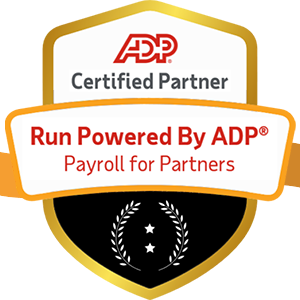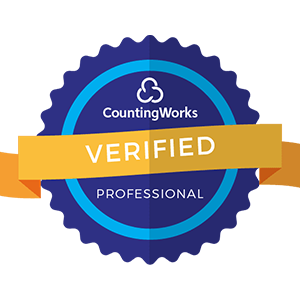Leading a team through Slack, Zoom, and project management software isn't just remote work—it's digital leadership. And it requires a fundamentally different skill set than traditional management.
The Digital Leadership Imperative

Your team is distributed across three time zones. Your daily standup happens on Zoom. Your project tracking lives in Asana. Your communication flows through Slack. Your collaboration happens in Google Docs. Your culture building happens in... where exactly?
This is the reality of modern team management.
Yet most leadership training still prepares managers for a world where teams work in the same office, where presence equals productivity, where hallway conversations build culture, and where you can read the room by literally looking around the room.
That world is gone—or at least fundamentally transformed.
The shift to digital-first work didn't start with the pandemic, but that global event accelerated a transformation that was already underway. Now, even teams that have returned to offices find themselves managing digitally: coordinating with remote colleagues, using collaboration tools, making decisions asynchronously, and building culture through screens.
Traditional leadership approaches aren't just insufficient—they're often counterproductive in digital environments.
Command-and-control management fails when you can't see people working. Micromanagement becomes impossible (and even more toxic) when work happens across time zones. Informal mentoring evaporates without spontaneous conversations. Culture building requires intentionality, not just proximity.
Digital leadership isn't just about using technology—it's about fundamentally rethinking how you lead, communicate, empower, and build teams when the primary medium is digital.
Let's explore what digital leadership actually means and how to develop these critical skills.
Understanding Digital Leadership
What Digital Leadership Is (and Isn't)
Digital Leadership Is NOT:
- Just using Zoom instead of conference rooms
- Simply managing remote workers
- Being tech-savvy or knowing all the tools
- Replacing in-person with digital
- Making everything asynchronous
Digital Leadership IS:
- Leveraging technology to amplify human connection
- Building trust and accountability without physical oversight
- Creating clarity in asynchronous communication
- Fostering culture intentionally through digital channels
- Empowering autonomy while maintaining alignment
- Measuring outcomes rather than activity
- Leading change in technology-driven environments
The Digital Leadership Challenge
What's Different:
Communication Complexity
- Multiple channels (email, Slack, Teams, video, async video)
- Lack of nonverbal cues and context
- Timezone coordination challenges
- Information overload and notification fatigue
Culture Building Difficulty
- No organic hallway conversations
- Harder to build social connections
- Onboarding requires more intentionality
- Company values need explicit reinforcement
Trust and Autonomy Balance
- Can't see people working (and shouldn't need to)
- Micromanagement temptation with surveillance tools
- Measuring outcomes vs. activity
- Supporting without hovering
Team Cohesion Obstacles
- Social isolation and disconnection
- "Us vs. them" between remote and office workers
- Difficulty reading team dynamics
- Meeting fatigue reducing engagement
The IMPACT Framework for Digital Leadership
I - Intentional Communication
The Challenge: Digital communication removes the natural context and nuance of in-person interaction. What worked in conference rooms fails in Slack threads.
The Digital Leadership Approach:
- Communication Channel Strategy
The Right Channel for the Right Message:
Synchronous Video (Zoom, Teams, Meet):
- Use for: Complex discussions, sensitive topics, brainstorming, team building
- Avoid for: Information sharing, simple updates, quick questions
- Best practices: Camera on when possible, clear agenda, recorded when helpful
Real-Time Chat (Slack, Teams):
- Use for: Quick questions, casual conversation, urgent matters, team bonding
- Avoid for: Complex explanations, sensitive feedback, important decisions
- Best practices: Clear subject lines, threading, emoji reactions, respect boundaries
Asynchronous Written (Email, Docs, Loom videos):
- Use for: Detailed information, formal communication, cross-timezone coordination
- Avoid for: Urgent matters, nuanced discussions, building relationships
- Best practices: Clear formatting, TL;DR summaries, explicit next steps
In-Person (when available):
- Use for: Strategic planning, relationship building, difficult conversations, celebrations
- Avoid for: Routine updates, excluding remote members, reinforcing proximity bias
- Best practices: Document decisions for those not present, rotate locations
- Overcommunicate with Clarity
The 3x3 Rule: Communicate important information three times, through three different channels.
Example:
- Major decision announced in all-hands (video)
- Follow-up email with details and rationale (written)
- Discussion in team channels for questions (chat)
Clarity Components:
- Context: Why this matters and the background
- Content: The actual information or decision
- Consequences: What this means and what happens next
- Questions: How to get clarification or provide input
- Create Communication Norms
Team Agreement on:
- Response time expectations by channel (Slack: 2 hours, Email: 24 hours)
- Which channels for which purposes
- Working hours and availability
- "Do Not Disturb" respect
- Meeting-free times for focused work
- Emoji or reaction standards
M - Measurable Outcomes
The Challenge: Without physical presence, managers often default to measuring activity (emails sent, hours logged) rather than outcomes.
The Digital Leadership Approach:
- Outcome-Based Goal Setting
OKR Framework (Objectives and Key Results):
Objective: Qualitative, inspirational goal Key Results: 3-5 measurable outcomes that indicate success
Example: Objective: Become the most customer-centric support team Key Results:
- Increase CSAT score from 4.2 to 4.6
- Reduce average response time from 4 hours to 2 hours
- Achieve 90% first-contact resolution rate
Not: "Send 50 customer emails per day" (activity, not outcome)
- Regular Check-ins Without Micromanagement
The 1-on-1 Framework:
Weekly Structure (30 minutes):
- 5 minutes: Personal check-in (how are you really doing?)
- 10 minutes: Progress on priorities (what's working, what's blocked?)
- 10 minutes: Coaching/support (how can I help?)
- 5 minutes: Looking ahead (priorities for next week)
Key Principles:
- Employee sets agenda
- Manager is there to support, not interrogate
- Focus on removing obstacles
- Document commitments and decisions
- Transparent Performance Metrics
Dashboard Approach:
- Team goals and progress visible to all
- Individual contributions to team goals clear
- Updated regularly (daily or weekly)
- Celebrates wins publicly
- Problems discussed privately
P - Psychological Safety
The Challenge: Digital environments can reduce psychological safety—people are less likely to speak up, share concerns, or admit mistakes through screens.
The Digital Leadership Approach:
- Model Vulnerability
Leadership Authenticity:
- Share your own challenges and mistakes
- Ask for help publicly
- Admit when you don't know something
- Show your process, not just results
- Normalize imperfection
Example: "I completely misunderstood the client's needs in yesterday's meeting. Here's what I learned and how I'll approach it differently next time."
- Create Safe Spaces
Psychological Safety Practices:
- Start meetings with personal check-ins
- Use anonymous feedback tools (Slido, Mentimeter)
- Separate ideation from evaluation
- Reward questions and challenge
- Respond non-defensively to feedback
- Never punish messengers
- Address Conflict Productively
Digital Conflict Resolution:
- Move from text to video quickly
- Assume positive intent
- Focus on issues, not people
- Seek to understand before being understood
- Document agreed-upon resolutions
A - Asynchronous Mindset
The Challenge: Real-time collaboration isn't always possible or desirable across timezones and work styles. Yet most leaders default to synchronous approaches.
The Digital Leadership Approach:
- Default to Async
Async-First Principles:
- Not everything needs a meeting
- Document decisions and context
- Respect deep work time
- Enable contribution across timezones
- Reduce meeting fatigue
Meeting Decision Tree:
- Can this be a document? → Write it
- Does everyone need to be there synchronously? → Consider async
- Does this require real-time discussion? → Schedule meeting
- Is this urgent enough to interrupt? → Rare, but yes if truly urgent
- Effective Async Communication
Document Standards:
- Clear subject/title indicating purpose
- TL;DR or executive summary at top
- Structured with headers and sections
- Specific asks or decisions needed
- Deadline for input
- Owner responsible for synthesis
Example: Decision Document
Decision Needed: Marketing Campaign Budget Allocation
TL;DR: Need to allocate $50K across three channels. Recommendation: 50% digital, 30% events, 20% content. Input needed by Friday.
Context: [Background information]
Options Considered: [Three approaches with pros/cons]
Recommendation: [Preferred approach and reasoning]
Questions for Team: [Specific input needed]
Timeline: Input by Friday 3/15, decision communicated Monday 3/18
- Hybrid Meeting Design
When Meetings Are Necessary:
- Clear agenda sent 24 hours ahead
- Pre-reads completed before meeting
- Facilitator keeps discussion on track
- Notes taken in real-time (shared doc)
- Decisions documented immediately
- Recording available for those who couldn't attend
- Action items assigned with deadlines
C - Culture Cultivation
The Challenge: Company culture doesn't happen organically in digital environments—it requires deliberate design and reinforcement.
The Digital Leadership Approach:
- Explicit Values Living
Values in Action:
- Make values visible in all channels
- Recognize values-aligned behavior publicly
- Use values as decision-making filter
- Tell stories illustrating values
- Address values violations promptly
Example: If "customer obsession" is a value:
- Start meetings with customer wins/feedback
- Celebrate team members who went above and beyond
- Share customer stories in channels
- Make customer impact visible in dashboards
- Intentional Social Connection
Beyond Work Bonding:
Virtual Coffee Chats:
- Random pairing of team members
- 20-minute casual conversation
- No work agenda
- Weekly or biweekly
Online Social Spaces:
- Dedicated channels for hobbies, pets, humor
- Virtual game nights or happy hours
- Book clubs or learning groups
- Celebrate personal milestones
Team Rituals:
- Weekly team lunch (virtual or in-person)
- Monthly team retrospectives
- Quarterly team offsites (if possible)
- Annual celebrations and traditions
- Digital Onboarding Excellence
First 90 Days for Remote Hires:
Week 1:
- Equipment shipped and ready day one
- Virtual welcome from team
- Buddy assigned for informal questions
- Clear schedule with structured learning
- Daily check-ins with manager
Week 2-4:
- Progressive responsibility increase
- Regular 1-on-1s with manager and team members
- Access to all systems and tools
- Contribution to real work begins
- Social connections facilitated
Month 2-3:
- Full autonomy with support available
- First significant project or contribution
- Feedback and adjustment
- Deeper relationship building
- Understanding of culture and norms
T - Trust Through Autonomy
The Challenge: Without visibility into day-to-day work, managers struggle to balance trust with accountability.
The Digital Leadership Approach:
- Outcomes, Not Activity
Autonomy Framework:
- Define what success looks like
- Provide resources and support
- Let people determine how to achieve it
- Measure results, not methods
- Trust competent adults to manage their time
Anti-Patterns to Avoid:
- Monitoring keyboard activity
- Requiring cameras on all day
- Tracking mouse movements
- Demanding immediate responses
- Scheduling unnecessary check-in meetings
- Transparent Decision Rights
RAPID Framework:
- Recommend: Who proposes the action
- Agree: Who needs to sign off (limited to necessary stakeholders)
- Perform: Who executes the decision
- Input: Who provides input (everyone relevant)
- Decide: Who makes final call (one person)
Clarity Eliminates Ambiguity: Team members know exactly when they can decide independently vs. when they need input or approval.
- Progressive Autonomy
Building Trust:
- Start with small decisions
- Increase scope based on demonstrated judgment
- Provide feedback and coaching
- Celebrate good decisions
- Treat mistakes as learning
- Never rescind autonomy as punishment for honest errors
Digital Leadership in Practice
Leading Through Digital Transformation
The Scenario: Your organization is implementing new technologies, changing processes, or shifting to digital-first work.
Digital Leadership Response:
- Clear Vision and Why
- Articulate compelling reason for change
- Connect to organizational mission and values
- Show how it benefits team members
- Be honest about challenges
- Inclusive Change Process
- Involve team in implementation decisions
- Gather feedback and concerns early
- Address resistance with empathy
- Provide ample training and support
- Patience and Iteration
- Expect adoption curve (early adopters, skeptics, laggards)
- Celebrate small wins
- Adjust based on feedback
- Give people time to adapt
- Model the Change
- Use the new tools yourself
- Share your learning process
- Show it's okay to struggle
- Demonstrate commitment
Managing Performance Digitally
The Challenge: How do you identify performance issues, provide feedback, and support improvement when you're not in the same space?
Digital Leadership Response:
- Early Pattern Recognition
Performance Indicators in Digital Work:
- Missing deadlines or communication
- Quality declining in deliverables
- Reduced participation in meetings/discussions
- Changed responsiveness patterns
- Withdrawal from team interactions
- Timely, Specific Feedback
Effective Digital Feedback:
- Don't wait—address quickly
- Video call, not email or chat
- Specific examples and impact
- Focus on future improvement
- Document conversation
- Follow up in writing
- Support and Resources
Performance Support Plan:
- Clear expectations and goals
- Regular check-ins (weekly or biweekly)
- Specific support provided (training, tools, time)
- Documented progress milestones
- Honest assessment of improvement
Building High-Performing Digital Teams
The Five Stages:
Stage 1: Forming (Weeks 1-4)
- Focus: Clarity and connection
- Activities: Team charter, communication norms, role clarification
- Leader Role: Direction-setting, relationship-building
Stage 2: Storming (Weeks 5-12)
- Focus: Addressing conflict and building trust
- Activities: Conflict resolution, norm refinement, feedback exchange
- Leader Role: Coaching, facilitating difficult conversations
Stage 3: Norming (Months 4-6)
- Focus: Establishing rhythm and efficiency
- Activities: Process optimization, role clarity, collaboration patterns
- Leader Role: Supporting autonomy, removing obstacles
Stage 4: Performing (Month 7+)
- Focus: Achievement and innovation
- Activities: High-quality output, self-organization, continuous improvement
- Leader Role: Vision-setting, strategic support, recognition
Stage 5: Adjourning
- Focus: Closure and reflection
- Activities: Celebrating achievements, lessons learned, knowledge transfer
- Leader Role: Acknowledgment, transition support
Digital Leadership Tools and Technologies
Essential Digital Leader's Toolkit
Communication and Collaboration:
- Slack/Microsoft Teams: Team chat and collaboration
- Zoom/Google Meet: Video conferencing
- Loom/Vidyard: Asynchronous video messages
- Miro/Mural: Virtual whiteboarding
- Notion/Confluence: Knowledge management
Project and Work Management:
- Asana/Monday.com: Project tracking
- Jira: Software development workflows
- Trello: Simple kanban boards
- ClickUp: All-in-one work management
Engagement and Culture:
- Donut: Random coffee pairings
- Officevibe/Culture Amp: Pulse surveys and feedback
- Bonusly: Peer recognition
- Gather/Spatial: Virtual office spaces
Productivity and Focus:
- Clockwise: Calendar optimization
- RescueTime: Time tracking and awareness
- Focus@Will: Focus music
- Calendly: Scheduling coordination
Technology Adoption Best Practices
- Strategic Selection
- Identify specific problem to solve
- Involve team in evaluation
- Prioritize integration with existing tools
- Consider learning curve and support
- Start with pilot before full rollout
- Effective Implementation
- Clear communication about why and how
- Comprehensive training provided
- Champions identified to support adoption
- Feedback mechanisms in place
- Patience with adoption curve
- Continuous Optimization
- Regular reviews of tool effectiveness
- Sunset tools that aren't working
- Consolidate when possible
- Stay current on features and updates
- Monitor usage and engagement
Measuring Digital Leadership Success
Key Performance Indicators
Team Performance:
- Goals achieved vs. set
- Quality of deliverables
- Innovation and continuous improvement
- Cross-functional collaboration effectiveness
Employee Engagement:
- Engagement survey scores
- eNPS (Employee Net Promoter Score)
- Participation in initiatives
- Retention rates
- Internal transfer/promotion rates
Communication Effectiveness:
- Response times within SLAs
- Meeting efficiency scores
- Information accessibility
- Clarity of communication (surveyed)
Digital Adoption:
- Tool usage and engagement
- Time savings from automation
- Process efficiency improvements
- Digital skill development
Culture Health:
- Psychological safety scores
- Trust indicators
- Values alignment
- Connection and belonging metrics
- Work-life balance satisfaction
360-Degree Feedback for Digital Leaders
Assess Your Digital Leadership:
Communication (Rate 1-5):
- I communicate clearly through multiple channels
- I ensure important information reaches everyone
- I create space for dialogue and questions
- I adapt communication style to audience
Trust and Autonomy (Rate 1-5):
- I focus on outcomes, not activity
- I empower team to make decisions
- I trust team members to manage their time
- I provide support without micromanaging
Digital Culture (Rate 1-5):
- I foster connection in digital spaces
- I model healthy digital work habits
- I create psychological safety online
- I celebrate and recognize team virtually
Adaptability (Rate 1-5):
- I embrace new technologies and approaches
- I help team navigate change
- I experiment and iterate
- I learn from failures openly
Common Digital Leadership Challenges
Challenge 1: Zoom Fatigue and Meeting Overload
The Problem: Back-to-back video meetings exhaust teams and reduce productivity.
Solutions:
- Implement "No Meeting Days" or blocks
- Default to 25 or 50-minute meetings (not 30/60)
- Make meetings optional when possible
- Use async alternatives when appropriate
- Build in breaks between meetings
- Encourage camera-off when helpful
Challenge 2: Always-On Culture
The Problem: Digital tools enable 24/7 communication, blurring work-life boundaries and leading to burnout.
Solutions:
- Model healthy boundaries yourself
- Respect "Do Not Disturb" status
- Use delayed send features for off-hours messages
- Explicitly discourage after-hours work
- Create "Right to Disconnect" policy
- Encourage time off and actually disconnect
Challenge 3: Information Silos and Overload
The Problem: Important information gets lost in chat threads, too many channels, and email overload.
Solutions:
- Implement clear information architecture
- Use centralized knowledge base
- Regular communication audits
- "Single source of truth" for decisions
- Structured meeting notes
- Newsletter or digest for key updates
Challenge 4: Proximity Bias
The Problem: In hybrid environments, in-office employees get more opportunities, recognition, and informal mentoring.
Solutions:
- Intentional visibility for remote contributions
- Rotate meeting times for timezone fairness
- Equal participation opportunities in meetings
- Promotion criteria doesn't favor office presence
- Regular bias awareness and training
- Measure and address disparity
Challenge 5: Social Isolation
The Problem: Remote team members feel disconnected from colleagues and company culture.
Solutions:
- Intentional virtual social opportunities
- Buddy systems for new hires
- Channels for non-work conversation
- Periodic in-person gatherings when possible
- Mental health and loneliness resources
- Regular check-ins on belonging and connection
The Future of Digital Leadership

Emerging Trends
- AI-Augmented Leadership
- AI assistants handling routine communication
- Sentiment analysis on team health
- Automated scheduling and coordination
- Predictive analytics on performance and retention
- Personalized coaching recommendations
- Virtual and Augmented Reality
- VR meeting spaces feeling more natural than video
- Spatial computing for collaboration
- Virtual office environments
- AR overlays for in-person/remote hybrid
- Extreme Flexibility
- Fully asynchronous teams across global timezones
- "Work from anywhere" as standard
- Results-only work environments (ROWE)
- Four-day work weeks
- Compressed schedules and job sharing
- Digital Wellbeing Focus
- Built-in rest and recovery
- Technology mindfulness
- Digital detox becoming normal
- Wellbeing metrics alongside performance
- Mental health priority
- Generational Shift
- Gen Z as digital natives bringing new expectations
- Reverse mentoring on technology
- Values-driven work environments
- Purpose and impact prioritization
- Continuous feedback culture
Your Digital Leadership Development Plan
Self-Assessment
Rate yourself honestly (1-5):
Communication:
- [ ] I'm comfortable with multiple digital communication channels
- [ ] I communicate clearly and concisely in writing
- [ ] I create psychological safety in virtual interactions
- [ ] I adapt my communication style to the medium
Trust & Autonomy:
- [ ] I focus on outcomes rather than activity
- [ ] I resist the urge to micromanage remotely
- [ ] I empower my team to make decisions
- [ ] I trust my team to manage their time
Culture & Connection:
- [ ] I intentionally build team culture digitally
- [ ] I create opportunities for social connection
- [ ] I recognize and celebrate wins virtually
- [ ] I model healthy digital work habits
Technology Adoption:
- [ ] I'm comfortable learning new tools
- [ ] I help my team adopt technologies effectively
- [ ] I choose appropriate tools for different needs
- [ ] I optimize our digital workflow continuously
90-Day Development Plan
Month 1: Foundation
- Audit current digital leadership practices
- Gather 360 feedback from team
- Identify 2-3 key areas for improvement
- Establish baseline metrics
- Read 2 books on digital leadership
- Join digital leadership community
Month 2: Implementation
- Implement new communication norms
- Experiment with async-first approaches
- Build intentional culture practices
- Improve 1-on-1 meeting structure
- Seek regular feedback from team
- Track progress on metrics
Month 3: Refinement
- Assess what's working and adjust
- Deepen team engagement practices
- Expand autonomy and trust
- Strengthen digital culture
- Measure impact on team performance
- Plan ongoing development
Continuous Learning Resources
Books:
- "Remote: Office Not Required" by Jason Fried & DHH
- "The Long-Distance Leader" by Kevin Eikenberry
- "Digital Body Language" by Erica Dhawan
- "Radical Candor" by Kim Scott (applies to digital)
Courses and Certifications:
- LinkedIn Learning: Digital Leadership courses
- Coursera: Leading People and Teams specialization
- Harvard Online: Leadership Principles
- General Assembly: Digital Collaboration workshops
Communities:
- Remote Leadership Community (various)
- Chief (for women executives)
- Young Leaders of the Americas Initiative
- Industry-specific leadership forums
Conclusion: Leading in the Digital Age
Digital leadership isn't a temporary adaptation to remote work—it's the future of management in a technology-driven world. Whether your team is fully remote, hybrid, or even co-located, digital tools and approaches are increasingly central to how work gets done.
The fundamental shift: Leadership is no longer about presence and proximity—it's about connection, clarity, and trust built through intentional digital practices.
What digital leadership requires:
New Skills:
- Multi-channel communication mastery
- Async collaboration fluency
- Virtual culture building
- Digital trust development
- Technology strategy
Mindset Shifts:
- Outcome focus over activity monitoring
- Intentionality over spontaneity
- Explicit over implicit communication
- Autonomy over oversight
- Results over presence
Continuous Adaptation:
- Technology keeps evolving
- Work models keep shifting
- Employee expectations keep changing
- Best practices keep emerging
- Learning never stops
The opportunity: Digital leadership done well creates more flexibility, better work-life balance, access to global talent, reduced costs, and potentially higher performance than traditional models.
The challenge: It requires letting go of outdated management approaches, embracing discomfort with new ways of working, and committing to continuous learning.
The choice: Leaders who develop digital leadership capabilities will thrive in the future of work. Those who resist will struggle to attract talent, build effective teams, and drive results.
Your next steps:
- Assess your current digital leadership capabilities honestly
- Identify your greatest area of opportunity
- Start with one small change this week
- Build on small wins progressively
- Measure impact and iterate
The future of work is already here—it's just unevenly distributed. Your role as a digital leader is to help your team and organization navigate this new reality with confidence, humanity, and effectiveness.
Digital leadership is human leadership in a digital world. Technology is the medium, but connection, trust, empowerment, and purpose remain the foundation.
Are you ready to lead in the digital age?





